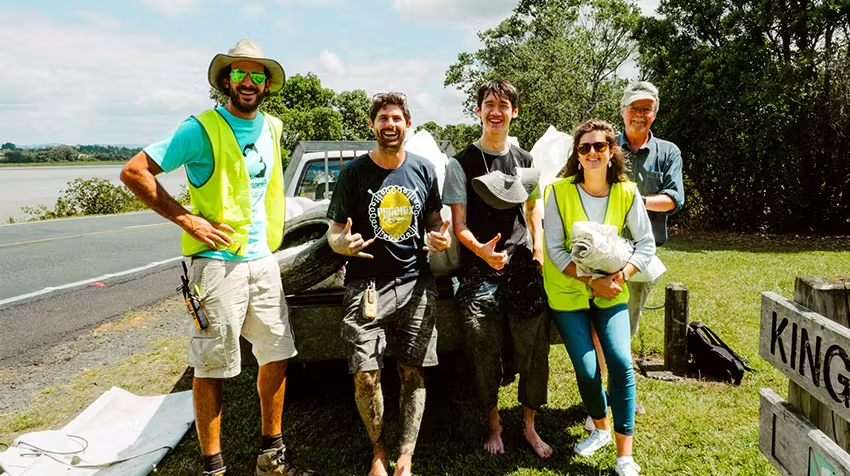
Imagine this: You’re knee-deep in a quarterly crunch, spreadsheets blurring before your eyes, and the finish line feels like it’s painted on the horizon. Then, a whisper ripples through the office—the incentive trip. Not just any getaway, but a sun-soaked escape to Bali or a snowy adventure in the Alps, all because your team smashed those sales targets. Suddenly, the coffee tastes stronger, the deadlines sharper. That’s the magic of incentive travel schemes. I’ve seen it firsthand in my years wrangling teams through high-stakes projects; these programs aren’t just perks—they’re the spark that turns good performers into legends.
As someone who’s planned more corporate escapes than I can count (and survived a few hilariously disastrous ones, like the time our “team-building” zip-line in Costa Rica turned into an impromptu rain-soaked therapy session), I can tell you incentive travel does more than fill seats on a plane. It’s a strategic powerhouse for boosting morale, loyalty, and the bottom line. Rooted in decades of research from groups like the Incentive Research Foundation, these schemes reward top talent with unforgettable experiences, proving that a well-crafted trip can outperform cash bonuses every time. In this deep dive, we’ll unpack 10 game-changing benefits, backed by real stories, stats, and a dash of that human touch that makes work feel less like drudgery and more like destiny.
What Is Incentive Travel?
At its heart, incentive travel is a motivational tool where companies dangle the carrot of an all-expenses-paid trip to supercharge performance. Think group jaunts to exotic locales or personalized getaways for star players—it’s all about tying rewards to clear goals like hitting sales quotas or nailing project milestones. Unlike a pat on the back or a generic gift card, these schemes weave travel into the fabric of recognition, creating buzz that lingers long after the confetti settles.
Drawing from my own playbook, I once coordinated a mid-sized tech firm’s incentive program to Iceland. What started as a simple “meet your targets” pitch evolved into aurora-chasing nights and geothermal spa days. The result? Not just higher output, but a team that bonded over midnight hikes, turning rivals into ride-or-dies. According to the Society for Incentive Travel Excellence (SITE), 80% of companies using these programs see direct lifts in sales or profits—proof that travel isn’t fluff; it’s fuel.
Why Choose Incentive Travel Over Cash Bonuses?
Cash bonuses are like that reliable old sedan—practical, sure, but they blend into the background noise of bills and groceries. Incentive travel? That’s the convertible that turns heads and etches memories. Studies from Oxford Economics show you’d need an 8.5% salary hike to match the motivational punch of a trip, yet travel delivers a whopping $4 return per $1 invested. It’s experiential, shareable, and sticks around in stories swapped at water coolers.
I remember pitching this shift to a skeptical CEO during a rainy board meeting. “Why blow the budget on flights when checks clear faster?” he grumbled. Fast-forward six months: His sales team, fresh off a Riviera yacht cruise, posted record numbers. The humor in it? He ended up crashing their post-trip barbecue, toasting with a sheepish grin. If you’re weighing options, consider how travel fosters that elusive “why I love this job” vibe—cash just can’t compete.
The 10 Key Benefits of Incentive Travel Schemes
Let’s cut to the chase: Incentive travel isn’t a luxury; it’s a lever for growth. From skyrocketing productivity to forging unbreakable team ties, these programs deliver ROI that’s as tangible as it is transformative. Backed by data from the Incentive Travel Index and real-world wins, here’s why savvy leaders are booking more flights than ever. We’ll break each benefit down with stories that hit close to home, because nothing sells like relatability.
Benefit 1: Boosts Employee Motivation and Performance
Nothing lights a fire under your team like the promise of paradise. Incentive travel turns abstract goals into vivid visions—beaches instead of benchmarks—driving a 22% performance spike, per IRF research. It’s that dopamine hit from envisioning palm trees amid pivot tables.
Picture my old sales squad: Sluggish Q2 projections had us all eyeing the exit. Enter the Maui incentive: Surf lessons for closers, luau feasts for leaders. Suddenly, cold calls warmed up, and we shattered records. The light humor? One guy, our eternal pessimist, joked he’d trade his surfboard for a spreadsheet—until he caught his first wave. Pure motivation magic.
Benefit 2: Enhances Employee Retention and Loyalty
In a world where job-hopping is the new norm, incentive travel builds golden handcuffs of gratitude. Companies offering these perks see turnover drop by 26%, with 71% of participants reporting deeper commitment (SITE stats). It’s not just a trip; it’s a signal: “We see you, we value you.”
I lost count of colleagues who stayed put after our annual escapes. Take Sarah, our rockstar marketer—she was LinkedIn-shopping until a Tuscany wine tour sealed her loyalty. Over Chianti sunsets, she confessed, “This isn’t just vacation; it’s validation.” Emotional pull like that? Priceless for retention.
Benefit 3: Fosters Team Building and Relationships
Shared sunsets beat solo spreadsheets every time. Group trips spark organic connections—think late-night strategy sessions over cocktails—that 72% of execs cite as the top relational win (Incentive Travel Index). It’s where hierarchies blur and high-fives flow.
Our firm’s Aspen ski retreat? Comedy gold: Executives tumbling in powder while juniors led the charge. Bonds formed over hot cocoa confessions turned a fractured team into a force. As one participant quipped, “Who knew avalanches build trust?” These ties amplify collaboration back at base.
Benefit 4: Increases Sales and Revenue Growth
Direct line from tarmac to treasure: 80% of firms link incentive travel to sales surges, with non-cash rewards yielding 3x revenue gains over bonuses (IRF). It’s aspirational ammo that propels quotas into overdrive.
Recall our pharma client’s Caribbean push: Targets tied to a yacht week, revenue jumped 18%. The emotional high? Top sellers returning with not just deals, but tales that inspired the next wave. It’s a virtuous cycle—performance begets prizes, prizes beget profits.
Benefit 5: Improves Company Culture and Morale
Incentive travel infuses fun into the corporate vein, elevating morale and embedding a “we’re in this together” ethos. With 58% of buyers eyeing cultural boosts (2024 Incentive Travel Index), it’s a antidote to burnout.
Post our Moroccan riad retreat—complete with souk haggling and starlit tagines—our office vibe shifted. Grumbles turned to gratitude circles. The humor? A exec’s epic camel fail went viral internally, humanizing leaders. Culture thrives when joy’s on the itinerary.
Benefit 6: Provides Lasting Memories and Emotional Impact
Cash fades; memories multiply. Trips create “priceless” stories that qualifiers (and plus-ones) relive, fostering 88% higher long-term performance (IRF). It’s emotional alchemy—turning effort into enduring legacy.
One standout: A client’s Rome reward, where ancient ruins mirrored career climbs. Years later, emails flood in: “That Colosseum toast changed everything.” With a wink, I’d add, “Even the gelato mishaps?” Lasting impact, zero regrets.
Benefit 7: Enhances Recruitment and Employer Branding
In the talent wars, standout perks shine. Advertising incentive travel slashes hiring times, with 65% of millennials craving experiences over extras (Aberdeen Research). It’s your billboard for “Join the adventure.”
We leveraged our program’s buzz on social—snaps from Santorini sunrises drew 40% more applicants. A recruit confessed over coffee, “Your trips sold me more than the salary.” Branding that travels? It’s recruitment rocket fuel.
Benefit 8: Offers High ROI and Cost-Effectiveness
Don’t let the itinerary fool you: These schemes pack $12.50 revenue per $1 spent (IRF), outpacing cash’s quick evaporation. Bulk bookings and soft power (like loyalty) make it a fiscal phenom.
Our ROI audit post-Bermuda? 112% return, thanks to sustained sales lifts. The chuckle-worthy bit: Budget hawks who greenlit it now lead the cheer. Smart spend turns skeptics into superfans.
Benefit 9: Promotes Work-Life Balance and Well-Being
Amid hustle culture, trips mandate unplug—recharging batteries for bolder breakthroughs. 42% of execs hail the ROI of blended business-leisure (SITE), slashing stress and sparking creativity.
After our wellness-focused retreat in Sedona—yoga at dawn, vortex hikes by dusk—burnout vanished. One team member, teary-eyed, shared, “I forgot what rest feels like.” Balance isn’t bonus; it’s bedrock for brilliance.
Benefit 10: Drives Innovation and Personal Growth
New horizons breed fresh ideas. Exposure to cultures and challenges ignites adaptability, with 63% of programs weaving in AI-enhanced personalization for 2025 (Incentive Travel Index).
Our Tokyo incentive? Tech tours met ramen runs, birthing app innovations back home. The emotional kicker: A shy dev emerged a storyteller. Growth like that? It’s the secret sauce for staying ahead.
Incentive Travel vs. Cash Bonuses: A Side-by-Side Comparison
| Aspect | Incentive Travel | Cash Bonuses |
|---|---|---|
| Motivational Impact | High—22% performance boost (IRF) | Moderate—quickly absorbed into bills |
| Retention Effect | 26% turnover drop; builds loyalty | Short-term; no emotional tie |
| Team Building | Excellent—shared experiences | None—individual reward |
| ROI | $4+ per $1 invested (Oxford Economics) | Lower; 8.5% salary equiv. needed |
| Memorability | Lasting stories; 88% sustained performance | Fleeting; forgotten fast |
| Cost Perception | “Priceless” value; scalable for groups | Flexible but inflationary expectations |
This table underscores why travel edges out: It’s not just reward—it’s revelation. For more on crafting yours, check SITE Global’s toolkit.
Pros and Cons of Incentive Travel Programs
- Pros:
- Skyrockets engagement and sales (80% of firms agree, SITE).
- Customizable for groups or solos, fitting any budget.
- Fosters inclusivity—often plus-one perks for families.
- Measurable wins: Track via pre/post surveys for 18% productivity gains.
- Cons:
- Upfront planning heft—logistics can snag if not pro-handled.
- Scheduling clashes; not everyone’s a wanderlust warrior.
- Budget variability—flights fluctuate, though ROI offsets.
- Perceived inequity if goals feel rigged (mitigate with transparency).
Weighing these, the scales tip toward triumph. My tip? Start small, scale smart.
Best Tools and Companies for Incentive Travel in 2025
Ready to launch? Top picks include TravelPerk for seamless booking, ITA Group for bespoke designs, and GoGather for trend-forward trips. For navigational ease, explore these via IRF’s directory. Transactionally, tools like Cvent streamline RFPs, ensuring your program’s polished.
People Also Ask (PAA)
How does incentive travel improve employee engagement?
It transforms goals into group goals, sparking 72% better relationships (Incentive Travel Index). Shared adventures beat solo slogs, creating that “we did this” glow.
What are examples of successful incentive travel programs?
Google’s global jaunts and Salesforce’s wellness retreats top lists—blending luxury with learning for 18% sales lifts.
Is incentive travel cost-effective compared to other rewards?
Absolutely—$12.50 revenue per $1 vs. cash’s fade-out (IRF). It’s investment disguised as indulgence.
How to measure ROI from incentive travel?
Pre/post metrics: Sales upticks, retention rates, engagement surveys. Tools like 360Insights track it all.
Can small companies afford incentive travel?
Yes—start local, like a Napa escape. Scale as wins roll in; the cultural ROI pays dividends.
FAQ
What makes incentive travel better than merchandise rewards?
Merch gathers dust; travel builds bonds. 65% prefer experiences (Aberdeen), yielding stickier motivation.
How often should companies run incentive programs?
Quarterly for momentum, annually for big bangs—align with cycles for max impact.
Are there tax implications for incentive travel?
Yes—treat as taxable income, but perks like group rates soften the sting. Consult IRS guidelines.
How to choose destinations for 2025?
Trend toward sustainable spots like Costa Rica (top IRF pick)—eco-luxury with purpose.
Can incentive travel work for remote teams?
Spot on—hybrid models with virtual teasers build hype, then unite for the win.
Whew, that’s the lay of the land on incentive travel’s tenfold gifts. From my front-row seat to transformed teams, I can attest: These schemes don’t just motivate—they multiply magic. If you’re plotting your next plot twist, drop a line. Your team’s Bali awaits.




More Stories
What is Incentive Travel? Benefits and Execution Guide
Incentive Travel Encourages Brand Advocacy
10 Tips for Planning a Corporate Incentive Travel Program